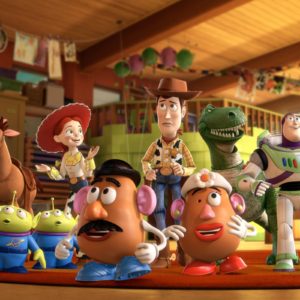A Guide for the Perplexed (Grandparent) Shopper
So I am the last person to be giving advice on shopping and present-buying.
 But I have been thinking about the topic. And more particularly about grandparents, like us, buying gifts for grandchildren. It can be perplexing and overwhelming.
But I have been thinking about the topic. And more particularly about grandparents, like us, buying gifts for grandchildren. It can be perplexing and overwhelming.
The other evening we were out in the shopping district of our neighborhood, on Ballard Avenue. We went into a toy store that seemed to me designed for us, that is, for the grandparents. Kind of like dog food. Marketed to the dog owner. The tip off was the Muzak tape, all 60’s music. And the gifts were are “creative,” “educational,” and pricey.
I thought, “There must be articles out there for grandparents about Christmas shopping for the grandchildren. Someone must be writing about this, surely. Helping us with the bewildering array of possibilities.”
When it comes to Christmas, Linda is our lead shopper. She is on it early, and in an organized way.
But I try. And occasionally I have a success. Like two years ago when I ordered “football in a box.” Out of the box came a green flannel football field, two goal posts, a couple of referees and 25 players. Only downside was all the plastic.
Still, to everyone’s surprise, including mine, the grandsons liked “football in a box.” What I observed about their interaction with this “toy” pretty much confirmed what I read in the attached article on toys from the Brooking Institute.
“Football in a Box” allowed for variations, creativity and interaction with other people, namely me. “Grandpa, let’s play.”
Here’s a key insight from that article:
“A good rule of thumb is to remember that the purpose of toys is to engage a child’s mind, not to be impressive in terms of technology and bells and whistles. Instead, focus on toys that involve 90 percent activity on the part of the child with 10 percent input from the toy.”
What the article does not do, alas, is tell you what toys to buy. But it does offer some sound wisdom on the intersection of play and learning, and on what toys are likely to engage kids.
Here’s more from the Brookings article, titled, somewhat dauntingly, “The Science of Toys.”
“In a world focused on test scores and where our children are under increased pressure to perform, it is important for parents and educators to remember that play is powerful because it naturally harnesses a set of principles that lead to learning.
“Play, especially a type of play called playful learning in which children lead but adults support them in discovering a learning goal, seems to be an especially powerful pedagogy for learning—even in domains usually linked with direct instruction methods including literacy, numeracy, and even shape knowledge.
“Playful learning does this by supporting joyful interactions, an actively engaged brain, iterative thinking, and the power of social interaction. But what do these ideas look like when you are in the store or online buying a toy? A good rule of thumb is to remember that the purpose of toys is to engage a child’s mind, not to be impressive in terms of technology and bells and whistles. Instead, focus on toys that involve 90 percent activity on the part of the child with 10 percent input from the toy.”
A confession. Without thinking about it, I assumed that the good toy was one which the kid took and went off to play with by him or herself or with other kids. But perhaps the good toy is different. It is tthe one that leads a grandchild to say, “Grandpa, will you play with me”?
In other words, the relationship is as/ more important than the toy. The good toy facilities interaction and relationship.
We are fortunate. All six of our grandchildren live in the Seattle area. The real gift is relationship. Ours with them. Theirs with us. Toys and gifts may symbolize, deepen or build on that relationship.
This may be the real test of the good toy, the good Christmas gift: how it calls forth interaction and relationship.
![Anthony B. Robinson [logo]](https://www.anthonybrobinson.com/wp-content/themes/anthonybrobinson/images/logo.png)
![Anthony B. Robinson [logo]](https://www.anthonybrobinson.com/wp-content/themes/anthonybrobinson/images/logo-print.png)